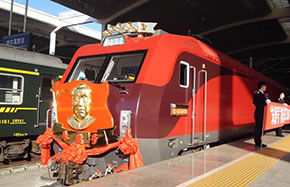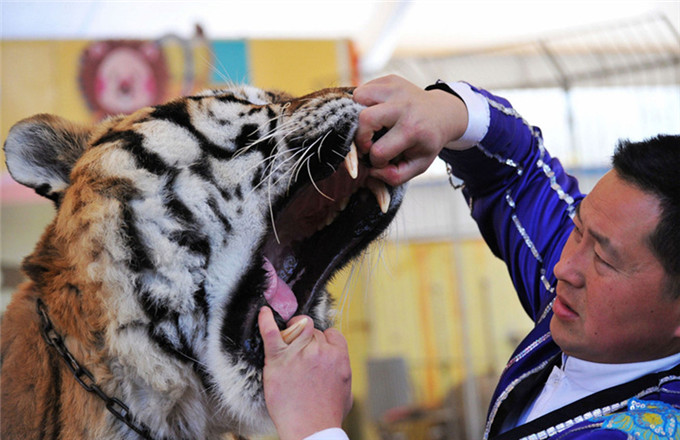A photographer goes beyond words to tell buildings' stories
With architecture, words are not enough. Consider the World Trade Center Transportation Hub.
In recent weeks, readers of The New York Times have compared it to a cathedral and a Venus fly trap, a pigeon deterrent and a bird carcass, the collapsing twin towers and the steel pieces that remained after they fell. Santiago Calatrava, its principal architect, sees it as a dove. I thought in 2005 that it was becoming more of a stegosaurus.
How can architecture get through so many verbal thickets to reach readers?
In the work of Fred R. Conrad.
For 37 years at The Times, Conrad has let buildings speak for themselves.
You'd think it would be easy to photograph buildings. They don't squirm or tell you they don't want their picture taken. As a rule, they stay put from one week to the next.
But to photograph buildings successfully, you have to subordinate your ego. The best pictures of buildings leave viewers unaware that a creative mind has intervened. Conrad, 64, keeps himself in the background and puts architecture in the foreground.
Panoramic view His interactive, spherical panoramic view of the hub will help viewers explore the structure and make up their own minds. It is presented as a kind of valedictory because Conrad is leaving The Times this week, as are many of our colleagues.
Any architectural writer can use a good photographer. A lucky writer gets a partner, a photographer who leads as well as follows, whose images evoke what words cannot - how buildings are shaped by daylight, shadow, reflection and atmosphere.
Since 1981, I have been lucky enough to count Conrad as my partner. We have walked through the 21-meter-deep pit at ground zero together and explored the uppermost reaches of the new 1 World Trade Center.
Readers did not need my words in 2002 to discern the sorrow conveyed by memorials around New York City. Using both a special Polaroid film (No 669) and a simple plastic Holga camera, Conrad conveyed that ineffable, elegiac quality.
A graduate of the University of Michigan, Conrad joined The Times in 1977. After the disastrous blackout that summer, one of the city's architectural marvels, the Loew's Kings Theater in Brooklyn, closed its doors. A few miles away, the Bronx was burning.
In the winter of 1981, Conrad and I were assigned to profile one of the city's busiest firehouses, Engine Co 75 and Ladder Co 33, in the Bronx. While we were following the companies, burglars set fire to a fifth-floor apartment of a building in University Heights, at 2102-04 Aqueduct Ave East. Fire Chief Ken Cerreta told us a few days later that the entire structure would be abandoned within a month.
Conrad and I could scarcely believe 55 people were about to be homeless on account of a single fire. Yet he was smart enough to swivel from the original story. Let's follow the building on Aqueduct Avenue, he said, and see what happens.
I did not want to insert myself into the lives of desperate families, nor did I care to roam empty corridors under the control of "strippers", scavengers intent on stealing every inch of copper pipe and wiring and every marble stair tread.
But Conrad persisted. When else would we get a chance to see for ourselves the very process that was ravaging the Bronx?
Persistence
I followed his lead and depended on his street smarts and Midwestern courtesy. Before we paid our first call, to a family in Apartment 1J, Conrad stopped at a bakery to buy sweet rolls for the children. This was a treat for youngsters who had to fetch water from a nearby fire hydrant, since there was no longer running water in the building.
As the strippers yanked out all the material they could, they rendered each line of apartments unusable. At Conrad's insistence, we followed them down to a scrap-metal dealer on Jerome Avenue. There, Conrad prodded me to talk with the dealer, who said he paid 50 cents a pound for copper.
Cerreta's prediction came true. The building, like so many others, emptied out. Today, however, three-story rowhouses with front yards stand in its place. A few kilometers away, the Loew's Kings has undergone a miraculous restoration.
Fittingly, the theater was our last assignment together. Having witnessed the collapse of New York, Conrad and I were able to end on an upbeat note of renaissance.
Riding the train back to Manhattan, though, we didn't dwell on that. Instead, following his custom, Conrad told me about books I ought to read (Without Sanctuary, by James Allen) and exhibits I ought to see (Genesis, by Sebastiao Salgado). He urged me one day to try to visit the artist Ellsworth Kelly in upstate New York.
New York Times


















